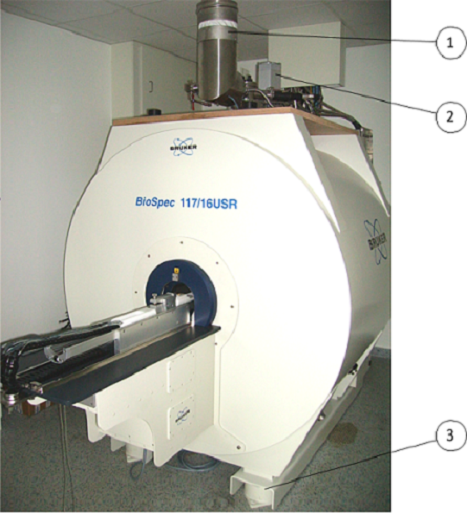Quench Tube
All magnets listed above must be attached to a gas-exhaust pipeline, also called a quench tube. The quench tube is needed to sustain the safe operating condition in case the magnet status changes unplanned from superconducting to normal conducting. In this process, the magnet will be discharged by it’s own very rapidly. This is called “the magnet quenched”.
Under normal operation conditions, the quench tube is blocked to the magnet dewar by a burst disk. This burst disk brakes as soon as the magnet quenches and the quench tube vents the quickly evaporating cryogen gases out of the magnet room to the outside of the building.
The magnet is located on U-shaped beams, which are supported by vibration absorbers to minimize influences from building vibrations. Therefore, thee quench tube is also mechanically isolated using a flexible quench tube connection. In the following figure a quench tube connection is shown as an example.
Quench tube connection in the magnet room.


